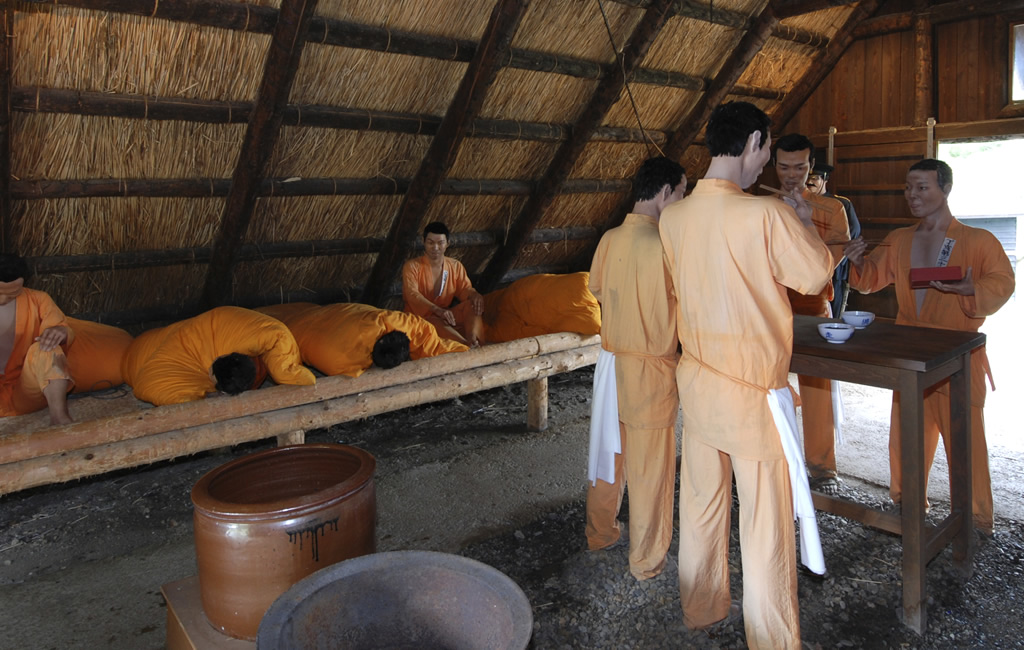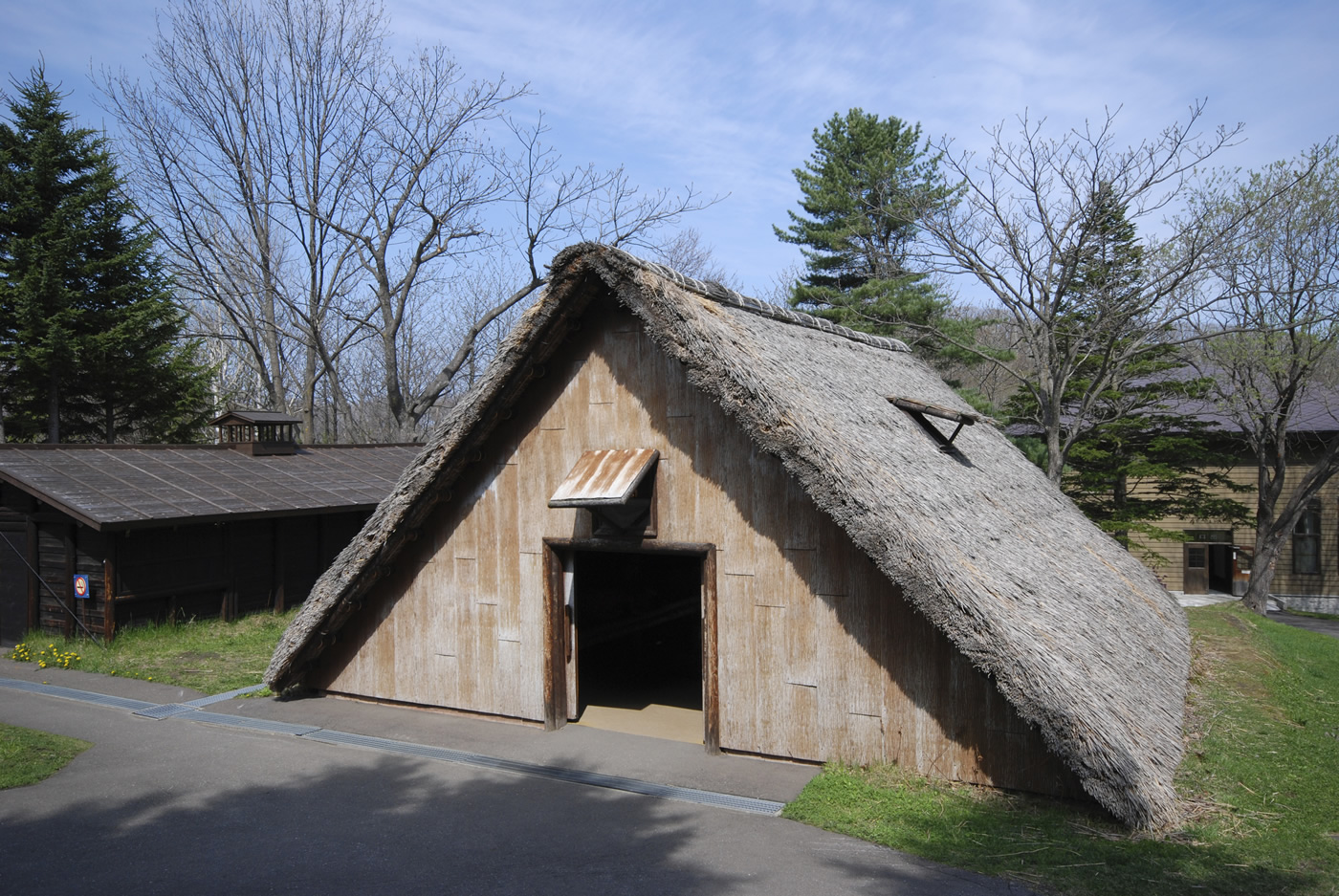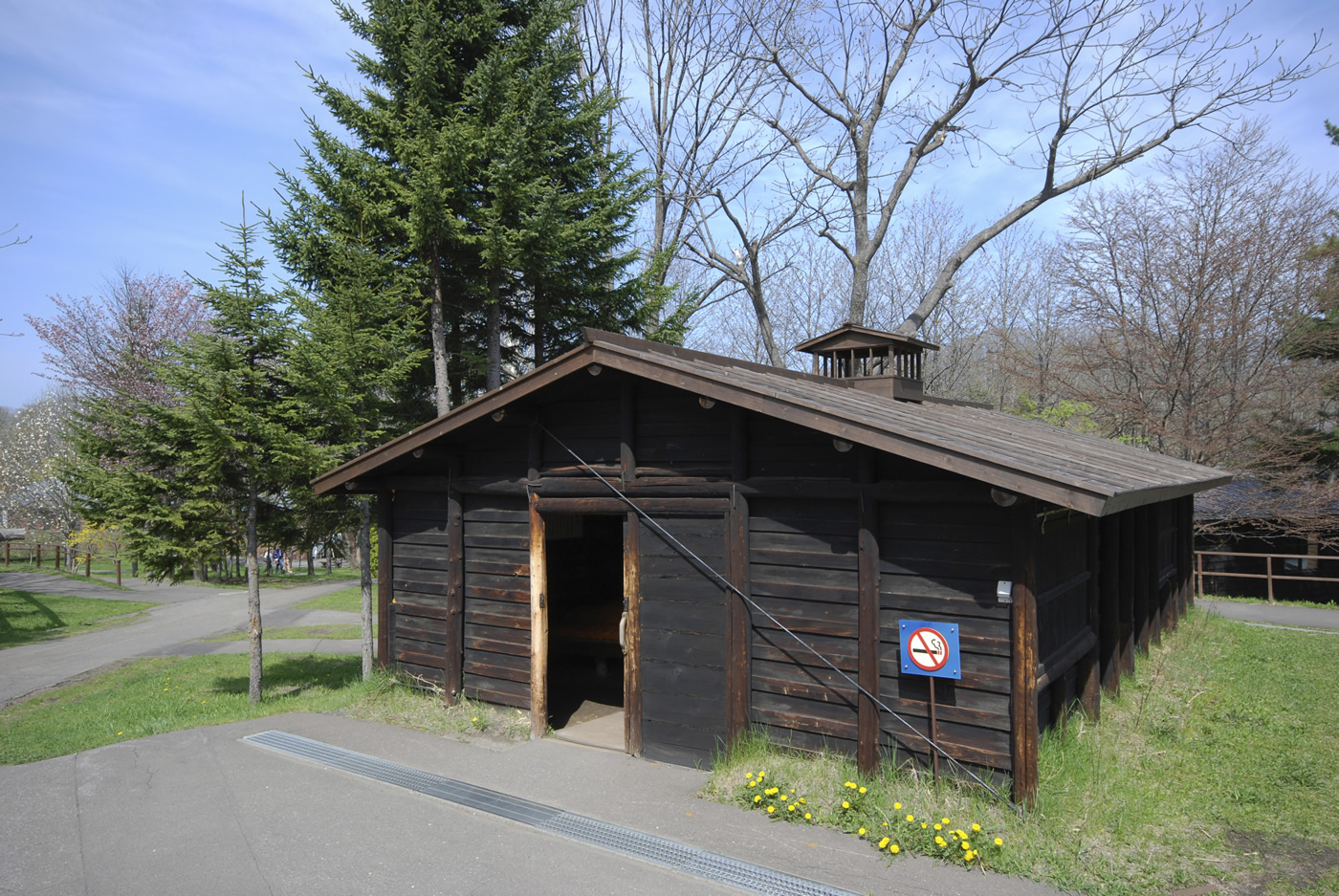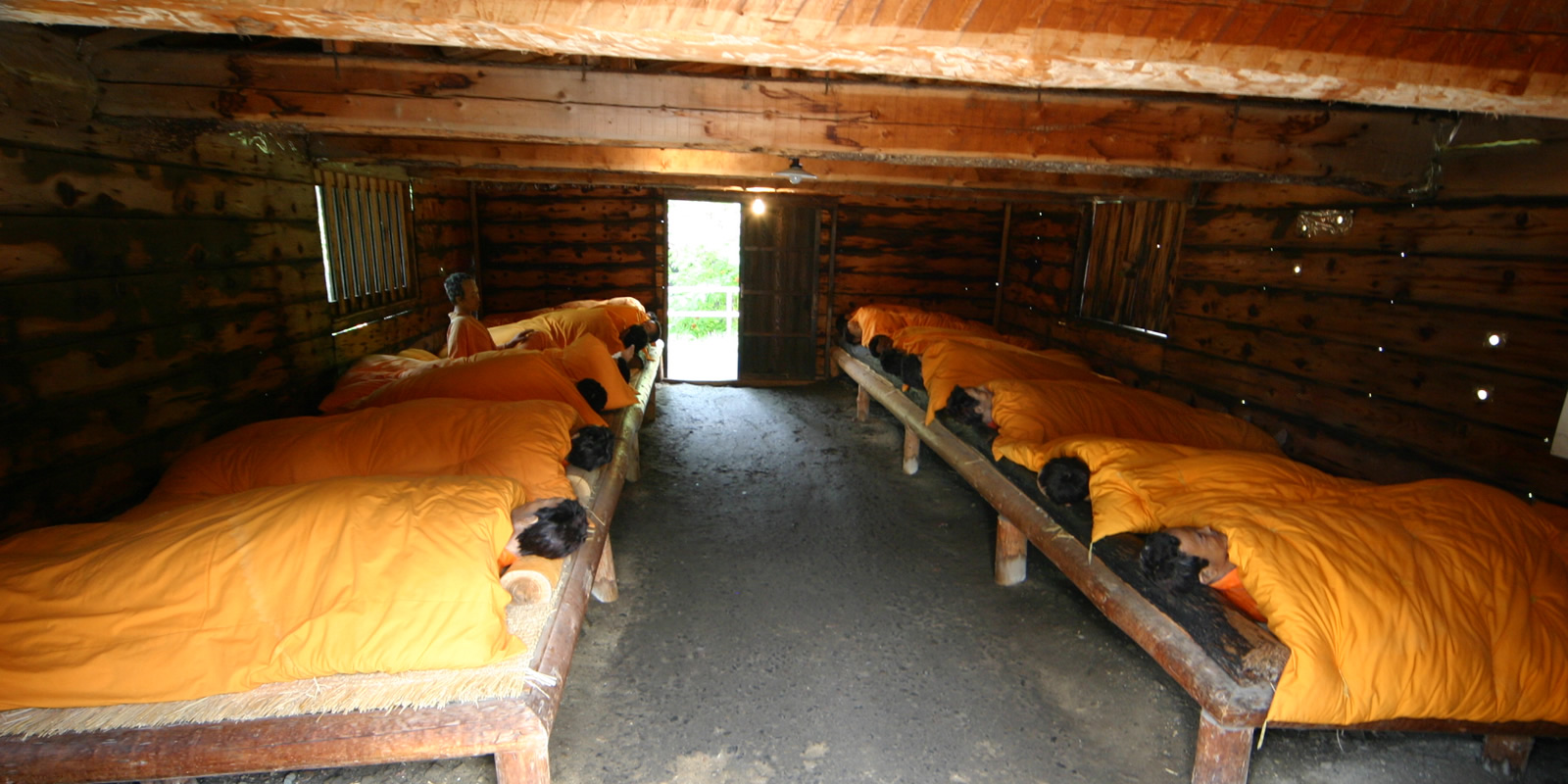Temporary Quarters
きゅうはくじょ


- Reconstructed
- Construction: 1891
- Reconstruction: 1983
- Total length: 12m²
When inmates worked at a place distant from the prison and were unable to return to the prison after work, they stayed at temporary quarters.
In constructing Central Road connecting Abashiri to Sapporo, more than 1,000 inmates were sent to construction sites for the 8 months from April through November 1891. Every time a road section was completed, inmates moved to the next construction site and built sleeping quarters.
The temporary quarters were called “a traveling prison” and were made of logs. Inmates dug the ground to a depth of 60 - 90cm and hammered in wooden boards to erect vertical walls. Inside the quarters, there was an earthen floor in the center and a toilet at the end of the room. The toilet and other parts of the room were not partitioned, so the inmates were under guard all the time. Logs were nailed to the bed for inmates to use as pillows. For bedclothes, each inmate had a thin kashiwabuton, a thin quilt that inmates folded in half and slept inside.
To prevent escape, there was only one doorway. In the days of Hokkaido’s modern development, huts similar to temporary quarters were used at construction sites and were called tako-beya, sleeping quarters for forced laborers.
In constructing Central Road connecting Abashiri to Sapporo, more than 1,000 inmates were sent to construction sites for the 8 months from April through November 1891. Every time a road section was completed, inmates moved to the next construction site and built sleeping quarters.
The temporary quarters were called “a traveling prison” and were made of logs. Inmates dug the ground to a depth of 60 - 90cm and hammered in wooden boards to erect vertical walls. Inside the quarters, there was an earthen floor in the center and a toilet at the end of the room. The toilet and other parts of the room were not partitioned, so the inmates were under guard all the time. Logs were nailed to the bed for inmates to use as pillows. For bedclothes, each inmate had a thin kashiwabuton, a thin quilt that inmates folded in half and slept inside.
To prevent escape, there was only one doorway. In the days of Hokkaido’s modern development, huts similar to temporary quarters were used at construction sites and were called tako-beya, sleeping quarters for forced laborers.
Gallery



